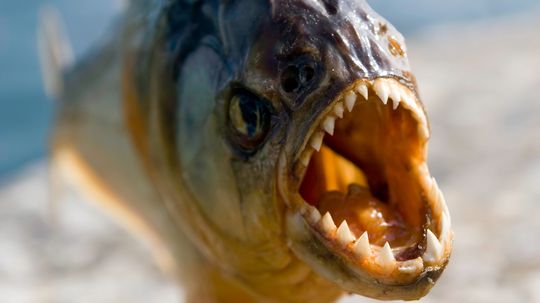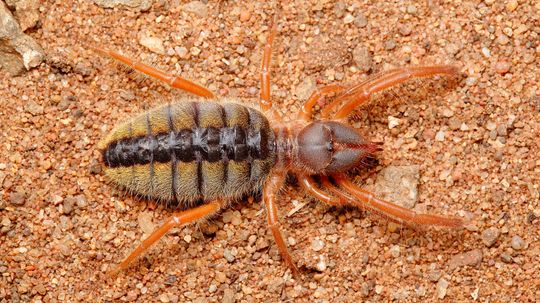Jesslyn Shields is a freelance science writer working out of Athens, Georgia. She writes about brand new research for HowStuffWorks. Since 2010, Jesslyn's written science news and content for educational videos, because she loves to always have something new to yammer on about at parties. You can find her online at www.jesslynshields.com
Recent Contributions
Lemmings don't commit mass suicide as is popularly believed, but they are aggressive and have even been known to charge larger predators.
Piranhas are some of the most feared fish in the world, but is their reputation for ferocity a bit overblown?
You might wonder what phosphates do, but they are so intrinsic to our daily lives that the question really is: What don't phosphates do?
Advertisement
While they may incite fear due to their impressive dimensions, these spiders play crucial roles in their ecosystems and have become subjects of significant scientific interest and study.
Sea spiders don't do anything by the book, and researchers have just gotten to the bottom of how they breathe.
By Jesslyn Shields & Ada Tseng
You can't tell a book by its cover, and you can't tell a squid by its Nosferatu getup.
By Jesslyn Shields & Ada Tseng
Although spending time upside down can be good for overall health, doing so eventually can be fatal under the right conditions.
Advertisement
"Pure coyotes" are now much rarer than what we would consider coyote-wolf hybrids, or coywolves.
A zorse is one strange looking horse. That's because it's the product of a zebra stallion and a female horse.
The waters of the Atlantic and Pacific oceans meet at the tip of Cape Horn and never the two shall mix, right?
Cone snails are marine animals that harpoon their prey and incapacitate them with deadly toxins. They may be beautiful, but they are highly venomous.
Advertisement
Caracals have really cool ears and can also jump 10 feet in the air from a seated position.
With lightning speed and incredible vision, the cheetah is the fastest land animal on Earth and the best hunter on the savanna.
The toughest animal in the world has just released its first sex tape, and as with all things water bear, things get pretty freaky.
Tarantulas are the largest spiders in the world and, believe it or not, some can live for up to 30 years.
Advertisement
The blobfish is actually pretty average looking in its normal habitat, but becomes a blob when it transitions from the pressure at depth to the water's surface.
Is he a jolly little man in jammies or a monster carrying a sack of eyeballs? European legend says the Sandman is probably both.
SOS was the most commonly used distress signal from the turn of the 20th century until before WWII. But exactly what does SOS mean?
Bottle trees originated centuries ago in the Congo in West Africa and still hold a special spiritual place in the heart of the American landscape.
Advertisement
Panda populations are flourishing, and that's good news. But with the threats of infrastructure and livestock, can that trend last?
These arachnids are aggressive, unbelievably fast and love to murder ants for no reason, but don't worry - they're harmless.
Thanks to new technology, researchers have discovered that the common swift flies 10 months a year without landing, setting a world record for uninterrupted time aloft.
Ninety percent of brown recluse bites don't have any effect at all - but the mythology around these creatures and their bites is legendary.
Advertisement
Is the "banana spider" you're looking at the one that sits around harmlessly catching flies, or could its bite kill a small child? If we rely solely on common names, this question is complicated.
The axolotl, a critically endangered species, can regenerate virtually any of its limbs or organs and has a face that's totally irresistible.

























